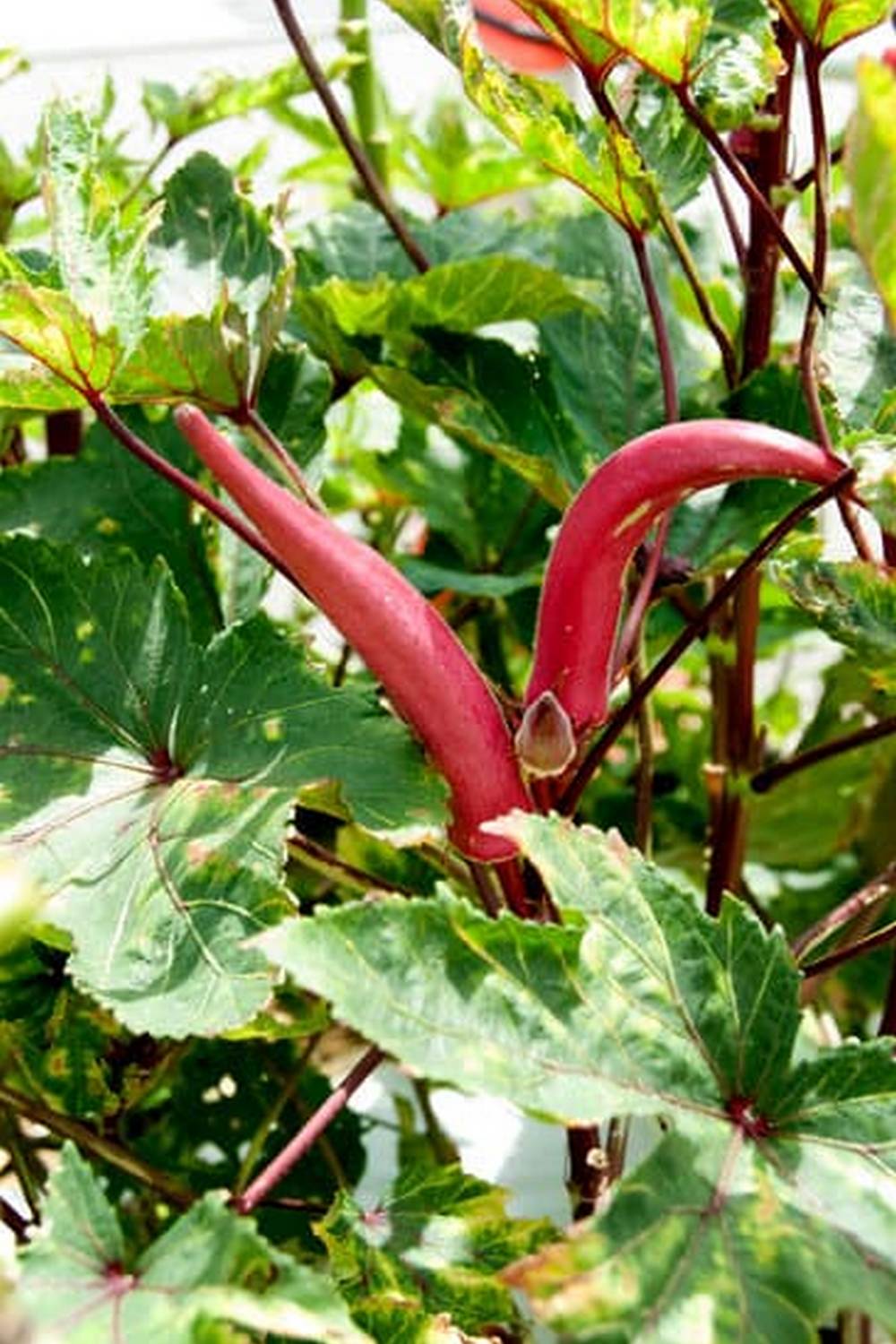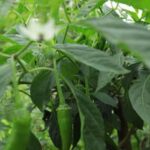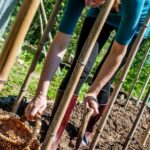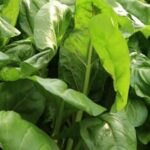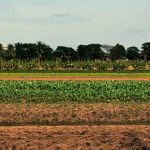Flagstaff, Arizona, offers a unique environment for beginner vegetable gardeners to delve into the world of growing their own produce. From its cool mountain climate to its stunning natural beauty, Flagstaff provides an ideal setting for cultivating a bountiful garden. In this guide to Flagstaff vegetable gardening for beginners, we will explore the benefits of growing vegetables in this region, how the local climate influences gardening practices, and essential tips for choosing the right vegetables and caring for your garden.
Vegetable gardening in Flagstaff comes with a multitude of advantages that make it a rewarding and enjoyable experience. Not only does it provide an opportunity to connect with nature and enjoy fresh, homegrown produce, but it also promotes sustainability and self-sufficiency. Whether you are looking to enhance your culinary creations or simply enjoy the therapeutic benefits of working in the garden, cultivating vegetables in Flagstaff can be a fulfilling endeavor.
One key aspect that beginners must consider when embarking on their vegetable gardening journey in Flagstaff is understanding the region’s unique climate and how it impacts plant growth. With its high altitude and four distinct seasons, Flagstaff presents both challenges and opportunities for gardeners. By learning about the local climate patterns and how they affect vegetable cultivation, beginners can make informed decisions about which plants to grow and how to best care for them throughout the year.
Benefits of Vegetable Gardening in Flagstaff
Vegetable gardening in Flagstaff offers a multitude of benefits for beginners looking to try their hand at cultivating their own produce. One of the primary advantages is the ability to have access to fresh, organic vegetables right in your backyard. By growing your own vegetables, you can ensure that they are free from harmful pesticides and chemicals commonly found in store-bought produce.
Health Benefits
Engaging in vegetable gardening not only provides physical activity but also has numerous health benefits. Fresh vegetables are rich in essential vitamins, minerals, and antioxidants that contribute to a healthy diet and overall well-being. Eating a diet high in vegetables can help reduce the risk of chronic diseases such as heart disease, diabetes, and certain types of cancer.
Cost Savings
Another significant benefit of vegetable gardening in Flagstaff is cost savings. By growing your own vegetables, you can significantly reduce your grocery bill throughout the growing season. With proper planning and care, a well-tended garden can yield an abundance of produce that would otherwise need to be purchased from the store. Additionally, excess harvest can be preserved through freezing or canning for later use, providing even more value for your efforts.
Understanding Flagstaff’s Climate and How It Affects Vegetable Gardening
Flagstaff, located in Arizona, experiences a unique climate that can present both challenges and opportunities for vegetable gardening beginners. Understanding Flagstaff’s climate is essential for successful gardening in this region. With its high elevation of over 7,000 feet, Flagstaff has a cooler and more variable climate compared to other parts of Arizona. This cooler climate means that the growing season in Flagstaff is shorter, typically from late spring to early fall.
To make the most of vegetable gardening in Flagstaff, beginners should take into account the city’s unique climate considerations. Here are some key points to consider:
- Temperature fluctuations: Flagstaff can experience temperature fluctuations, with cool nights even during the summer months. It’s important to choose vegetables that can tolerate these temperature variations.
- Short growing season: Due to the shorter growing season in Flagstaff, it’s crucial to select quick-maturing varieties of vegetables to ensure a successful harvest before the frost sets in.
- Sun exposure: While Flagstaff enjoys plenty of sunshine throughout the year, gardeners should be mindful of protecting their plants from intense sunlight during hot summer days.
Despite the challenges posed by Flagstaff’s climate, there are also several benefits for vegetable gardening beginners. The cooler temperatures in Flagstaff can be ideal for growing certain cool-season crops such as lettuce, spinach, and kale. Additionally, the lower humidity levels in this region help reduce the risk of common plant diseases that thrive in moist environments.
By understanding and adapting to Flagstaff’s climate, beginner gardeners can successfully cultivate a thriving vegetable garden in this unique high-elevation setting. Implementing proper techniques and selecting appropriate vegetable varieties will help maximize your gardening efforts and yield a bountiful harvest to enjoy throughout the growing season.
Choosing the Right Vegetables for Flagstaff’s Growing Conditions
Choosing the right vegetables to grow in your Flagstaff vegetable garden is crucial for a successful harvest. Due to Flagstaff’s unique climate, it is important to select vegetables that are well-suited to the region’s growing conditions. Here are some vegetable options that thrive in Flagstaff:
- Root Vegetables: Root vegetables like carrots, beets, and radishes are excellent choices for Flagstaff due to their ability to tolerate cooler temperatures and grow well in the region’s soil.
- Leafy Greens: Leafy greens such as lettuce, spinach, and kale also do well in Flagstaff’s climate. These vegetables are rich in nutrients and can be grown throughout the growing season.
- Brassicas: Cabbage, broccoli, and cauliflower are part of the brassica family and can withstand colder temperatures, making them ideal for Flagstaff gardeners.
When selecting vegetables for your garden, consider factors such as the length of the growing season in Flagstaff, as well as your garden’s sun exposure and soil quality. By choosing vegetables that are well-suited to Flagstaff’s growing conditions, you increase your chances of a bountiful harvest.
In addition to choosing the right types of vegetables, it is also important to consider planting times in Flagstaff. Some vegetables can be planted earlier in the spring or later in the summer to extend your growing season. By planning your planting schedule accordingly, you can maximize your vegetable garden’s productivity throughout the year.
Ultimately, by selecting vegetables that are suited to Flagstaff’s climate and planting them at optimal times, beginners can set themselves up for a successful vegetable gardening experience in this unique high-altitude city. With proper care and attention to detail, you can enjoy a variety of fresh produce from your very own Flagstaff vegetable garden.
Preparing the Soil for Successful Vegetable Gardening in Flagstaff
To ensure successful vegetable gardening in Flagstaff, one of the most important steps is preparing the soil. The soil in this region can be quite challenging due to its high clay content and alkaline pH levels. To address these issues, it is recommended to amend the soil with organic matter such as compost or well-rotted manure. This will help improve soil structure, drainage, and fertility, creating a more hospitable environment for vegetables to thrive.
In addition to adding organic matter, gardeners in Flagstaff may also need to adjust the pH level of the soil to make it more suitable for vegetable growth. A simple soil test can determine the current pH of the soil, and if necessary, lime can be added to raise the pH or sulfur can be added to lower it. Maintaining a slightly acidic pH level around 6.0-7.0 is ideal for most vegetable crops.
It is also important to ensure that the soil has good drainage to prevent waterlogged conditions that can lead to root rot and other issues. Raised beds are a popular option for vegetable gardening in Flagstaff as they provide better drainage and allow for more control over the quality of the soil. By taking the time to properly prepare the soil before planting, beginners can set themselves up for a successful and bountiful harvest from their Flagstaff vegetable garden.
Planting and Caring for Vegetables in Flagstaff
One important aspect of planting in Flagstaff is to pay close attention to the last frost date and plan your planting schedule accordingly. Some vegetables can tolerate cooler temperatures better than others, so it’s essential to know which crops are suitable for early planting in the region. Additionally, consider using row covers or cold frames to protect tender plants from unexpected frosts.
Caring for your vegetable garden in Flagstaff involves regular watering, especially during the hot summer months. Mulching around your plants can help retain soil moisture and regulate temperature fluctuations. Be mindful of weeds, as they can compete with your vegetables for nutrients and water. Regularly inspect your plants for signs of pests or diseases, and take appropriate measures to prevent infestations from spreading.
| Vegetable | Recommended Planting Schedule |
|---|---|
| Tomatoes | After last frost date in spring |
| Zucchini | Early summer for continuous harvest |
| Lettuce | Early spring or late summer/early fall |
Dealing With Common Pests and Diseases in Flagstaff Vegetable Gardens
Identifying Common Pests
One of the challenges that beginner vegetable gardeners in Flagstaff may encounter is dealing with pests and diseases that can affect their plants. Some common pests to watch out for in this area include aphids, caterpillars, squash bugs, and flea beetles. These tiny invaders can quickly wreak havoc on your vegetable garden if left unchecked.
Preventing and Treating Pest Infestations
To prevent pest infestations in your Flagstaff vegetable garden, it’s essential to practice good garden hygiene. This includes regularly removing any dead or decaying plant matter, keeping weeds at bay, and rotating your crops each season.
Additionally, you can introduce beneficial insects like ladybugs or lacewings to help control pest populations naturally. If you do notice signs of a pest infestation, such as holes in leaves or chewed fruit, there are organic methods of treatment available, such as neem oil or homemade insecticidal soap.
Managing Common Diseases
In addition to pests, Flagstaff vegetable gardens may also be susceptible to certain diseases like powdery mildew, blossom end rot, and various fungal infections. To prevent these issues, it’s crucial to provide adequate air circulation around your plants by spacing them appropriately. Avoid overhead watering which can promote the spread of fungal spores and ensure good drainage in your garden beds.
If you do come across diseased plants, promptly remove and dispose of them to prevent further contamination to other healthy plants. Consider using disease-resistant varieties when selecting vegetables for your garden to minimize the risk of infection. By staying vigilant and taking proactive measures against both pests and diseases, you can help ensure a successful growing season for your Flagstaff vegetable garden as a beginner gardener.
Tips for Harvesting and Enjoying Your Flagstaff Vegetable Garden Produce
Flagstaff Vegetable Gardening for Beginners offers a rewarding and fulfilling experience to those who embark on this journey. By following the tips and guidelines provided in this guide, beginner gardeners in Flagstaff can successfully grow their own produce right in their backyard. From choosing the right vegetables to understanding the unique climate of Flagstaff, every step is crucial in ensuring a bountiful harvest.
One of the most significant benefits of vegetable gardening in Flagstaff is the ability to enjoy fresh, organic produce all year round. By growing your own vegetables, you can guarantee that your family is consuming food that is free from harmful chemicals and pesticides. Not only does this promote better health and well-being, but it also allows you to connect with nature and appreciate the process of growing your own food.
As you start harvesting your Flagstaff vegetable garden produce, remember to take pride in all the hard work and dedication you have put into nurturing your plants. Whether you are gathering vibrant tomatoes, crisp lettuce, or sweet bell peppers, each harvest is a testament to your commitment to sustainable living and self-sufficiency.
Embrace the joy of creating delicious meals from your homegrown vegetables and share them with friends and family as a true testament to the success of your Flagstaff vegetable gardening journey.
Frequently Asked Questions
What Vegetables Grow in Flagstaff AZ?
In Flagstaff, Arizona, some vegetables that grow well include cold-hardy varieties like kale, broccoli, carrots, and radishes. These vegetables thrive in the cooler temperatures and shorter growing season of Flagstaff’s unique climate.
What Is the Easiest Vegetable to Grow in Arizona?
The easiest vegetable to grow in Arizona is likely the hardy and heat-tolerant okra. Okra thrives in hot weather and requires minimal maintenance once established. It is a great option for beginners looking for a low-maintenance vegetable to grow in Arizona.
What Is the Easiest Vegetable Garden for Beginners?
For beginners, easy-to-grow vegetables like tomatoes, zucchini, cucumbers, and lettuce are ideal choices for a vegetable garden. These vegetables are relatively forgiving of mistakes and can produce a bountiful harvest with minimal effort. Starting with these varieties can help build confidence and experience in gardening for beginners.

If you’re looking to get into vegetable gardening, or are just looking for some tips on how to make your current garden better, then you’ve come to the right place! My name is Ethel and I have been gardening for years. In this blog, I’m going to share with you some of my best tips on how to create a successful vegetable garden.

